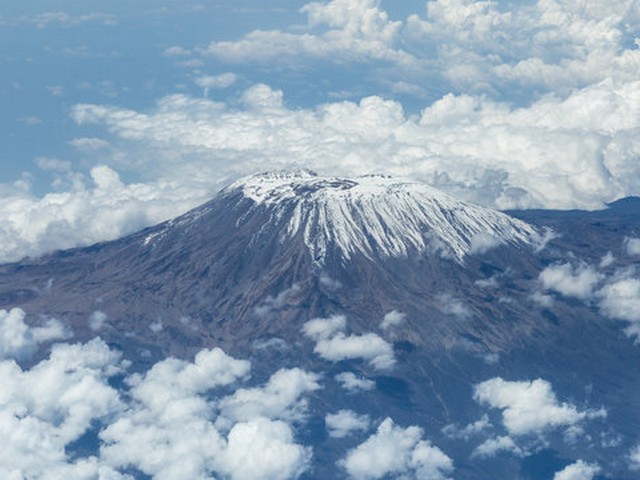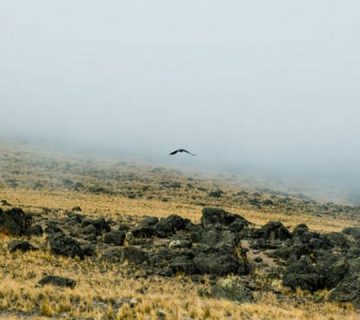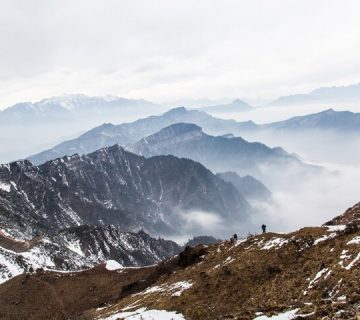Leave No Trace Practices For Kilimanjaro Trekking: A Guide to Responsible Climbing
Introduction: Embracing the Majesty of Kilimanjaro Responsibly
Mount Kilimanjaro, the roof of Africa, stands majestically as one of the world's most accessible high summits. A beacon for visitors from around the globe, it invites trekkers to ascend its well-trodden paths to experience breathtaking vistas and timeless landscapes. However, the increasing popularity of Kilimanjaro trekking demands a heightened commitment to environmental preservation. At Kilimanjaro Centre for Trekking and Ecotourism (KCTE), we champion the "Leave No Trace" principles to ensure that this magnificent mountain retains its splendor for generations to come. In this detailed guide, we'll traverse the necessary practices to minimize our footprints and maximize our respect for nature's grandeur.
Why Leave No Trace?
Protecting Kilimanjaro's Unique Ecosystem
Mount Kilimanjaro is not only a stunning spectacle—it's a vibrant ecosystem that is home to unique flora and fauna. The delicate balance of this environment can be easily disrupted by human activity. By adopting Leave No Trace practices, trekkers can help preserve the biodiversity and natural beauty of this iconic peak, ensuring that future adventurers can also enjoy its untouched allure.
Principles of Leave No Trace on Kilimanjaro
1. Plan Ahead and Prepare
Know Before You Go
Effective preparation is the cornerstone of a minimal impact trek. This involves understanding the terrain, weather conditions, and regulations. At KCTE, we provide comprehensive pre-trek briefings and resources to ensure that all climbers are well-prepared and equipped to tread lightly on the mountain.
2. Travel and Camp on Durable Surfaces
Stick to the Path
Kilimanjaro has designated trails and campsites that are designed to minimize environmental impact. It's crucial to stick to these paths and avoid cutting switchbacks or creating new trails. Our guided treks always follow established routes to protect the fragile undergrowth and prevent soil erosion.
3. Dispose of Waste Properly
Pack It In, Pack It Out
From food wrappers to biodegradable waste, everything you bring to Kilimanjaro should leave with you. KCTE emphasizes the importance of carrying all trash to lower elevations for proper disposal. We also educate our climbers on how to manage human waste responsibly in the mountain's delicate environment.
4. Leave What You Find
Preserve the Past
Kilimanjaro's cultural artifacts and natural objects play a critical role in its heritage and allure. Removing or disturbing these elements not only diminishes the mountain's heritage but is also illegal. Trekkers are encouraged to take photos and leave all natural and cultural treasures undisturbed.
5. Minimize Campfire Impacts
Feel the Warmth, Not the Burn
The dry vegetation on Kilimanjaro makes it particularly susceptible to wildfires. At KCTE, we advise against open fires and instead provide portable cooking stoves that have minimal environmental impact. This practice helps in preserving the landscape and preventing forest fires.
6. Respect Wildlife
Admire from a Distance
Kilimanjaro is teeming with wildlife, from majestic elephants to elusive leopards. It's vital to observe animals from a safe distance, avoid feeding them, and not disturb their natural behaviors. Our guides are trained to help you experience wildlife in a way that respects their natural habitats.
7. Be Considerate of Other Visitors
Share the Trail
Respect for fellow trekkers is just as important as respect for the environment. This includes keeping noise levels down, yielding to uphill hikers, and being courteous on the trails. A positive attitude and considerate behavior help ensure that everyone's experience is memorable.
The Role of KCTE in Promoting Sustainable Trekking
At KCTe, we don't just guide trekkers up the mountain; we ensure that every step taken is aligned with the best ecological practices. Our commitment to the Leave No Trace principles is woven into the fabric of our operations, from the training of our guides to the information we provide to our clients. We believe that responsible trekking is the only way to truly honor the natural wonder that is Kilimanjaro.
Frequently Asked Questions
What should I do with my trash on the mountain?
All garbage must be packed out. KCTE provides all climbers with trash bags to collect and carry waste back down the mountain for proper disposal.
Is it okay to take stones or plants from Kilimanjaro as souvenirs?
No, removing any natural material from Kilimanjaro is against the law and contrary to Leave No Trace principles. Take photos and leave everything else as you find it.
How can I minimize my impact when camping on Kilimanjaro?
Use established campsites, avoid altering the site, keep noise to a minimum, and use a portable stove instead of making a fire.
Conclusion: Join Us in Preserving Kilimanjaro
Embracing Leave No Trace practices isn't just about following rules—it's about fostering a profound connection with nature and ensuring that the beauty of Kilimanjaro endures. When you book your Kilimanjaro climb with Kilimanjaro Centre for Trekking and Ecotourism (KCTE), you're choosing a partner who is deeply committed to sustainable trekking. Together, we can ensure that the splendor of Kilimanjaro remains untouched for adventurers yet to come. Let's climb responsibly. Let's climb with KCTE.




